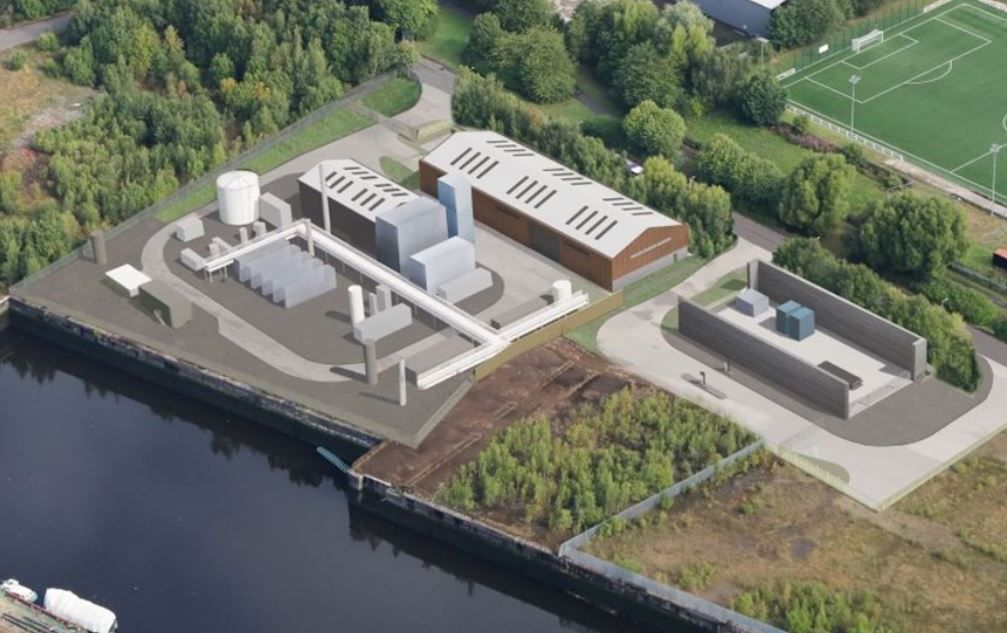
Peel NRE, part of United Kingdom-based Peel L&P, is constructing a brand new $24 million (£20 million) plant in West Dunbartonshire, Scotland that may flip plastic waste into hydrogen. The corporate says it would use new tech to “create an area supply of sustainable hydrogen from non-recycling plastics in any other case destined for landfill, incineration or export abroad,” studies The BBC. The hydrogen will then be utilized to gas vehicles, buses, and HGVs. There are plans to construct a hydrogen refueling station on the plant’s website.
“The power will deal with the twin problem of each tackling our drawback plastic while creating hydrogen, a sustainable gas for future generations,” mentioned Richard Barker, improvement director at Peel NRE, in a press launch. “While the main target should stay on eradicating plastic from society, there are nonetheless finish of life plastics that want managing. The £20m plant will play a pivotal function in making one of the best use of non-recyclable materials, with the ensuing hydrogen in a position to assist reduce carbon emissions from automobiles.”
This explicit facility makes use of expertise from Powerhouse Power Group, which it calls “Distributed Modular Era, our proprietary superior thermal conversion expertise, which we make use of to supply electrical energy and hydrogen from waste plastics.”
Powerhouse Power Group defined the way it works:
“DMG is the truth is a sub-stoichiometric, endothermic gasification course of. Whereby a major quantity of warmth is utilized to the waste plastics. This causes them to interrupt down into their constituent molecules, and thru a sequence of endothermic chemical reactions, flip into energy-rich syngas.”
It famous that “a typical plant will course of roughly 40 tonnes of waste plastic per day and produce as much as 2 tonnes (2000kgs) of hydrogen in the identical interval. This equates to roughly 50 kg of H2 for each tonne of feedstock.”
This raises the query: What occurred to the opposite 38 tonnes? Right here, we’ve got to look once more at what syngas really is product of and the way you flip it into hydrogen. Syngas is a mixture of carbon monoxide and hydrogen, normally created from methane in pure gasoline by means of steam reforming as a step within the strategy of producing hydrogen for ammonia manufacturing. In chemical notation:
CH4 + H2O → CO + 3H2
To separate the hydrogen from the CO, you add extra steam and get, guess what, carbon dioxide.
CO + H2O → CO2 + H2
OK then, what occurs to the carbon dioxide (CO2)? In one other hydrocarbon to hydrogen mission we’ve got mentioned—the Quest mission in Alberta—the CO2 is piped away and sequestered underground. That was the entire level of the mission, the definition of “blue” hydrogen.
Right here, they do not fairly say, however do word that “DMG services might be constructed prepared to incorporate Carbon Seize for utilization or storage.” Since they do not point out this excellent characteristic, I think they’re simply venting the CO2 into the environment.
Plastic is mainly a strong fossil gas and that’s what this plant is operating on. They’re utilizing pyrolysis, or heating plastic to extraordinarily excessive temperatures to make the syngas, which they’re then turning into hydrogen and CO2. The purpose of all of it, as we’ve got mentioned about chemical recycling earlier than, is to make plastic waste disappear in a feel-good train, which turning 40 tons of waste into 2 tons of hydrogen plus a complete lot of CO2 basically is.
I reached out to hydrogen knowledgeable Paul Martin of the Hydrogen Science Coalition for his ideas, asking: “They get 2 tonnes of hydrogen out of 40 tonnes of plastic. That appears awfully inefficient, and what occurs to the opposite 38 tonnes? Is that this all a rip-off?” He tells Treehugger:
“Sure, it is a rip-off. You gasify plastic to make syngas, and dump the CO2 to the environment. Plastic is a fossil gas as is any gas derived from it or from its vitality content material, and waste plastic is well and completely sequestered merely by burying it.” He additionally instructed Treehugger that the residue, the ash, could be a difficulty. “Any amount of F, Cl, or Br within the feed plastic (from fluoropolymers, PVC or brominated fireplace retardants) will find yourself making nastiness whether or not you burn it or pyrolyze or gasify it.”
That is the issue with this course of is that it’s no totally different than old school recycling: It’s all designed to make us be ok with shopping for disposable plastic packaging. They can not bury it anymore, they can not ship it to China anymore, and traditional incineration is just too apparent. Now they will make it go poof right into a cloud of CO2 and a squirt of hydrogen and everyone seems to be completely satisfied.
However in the end, realistically, the one option to make plastic waste disappear is to cease producing it within the first place. All the things else is simply smoke and mirrors.